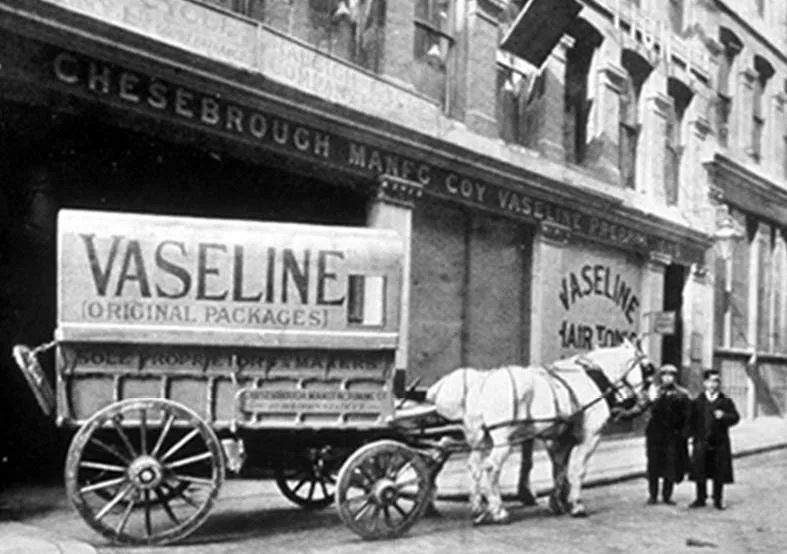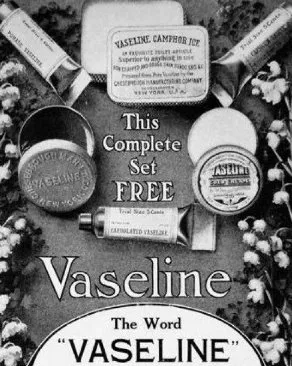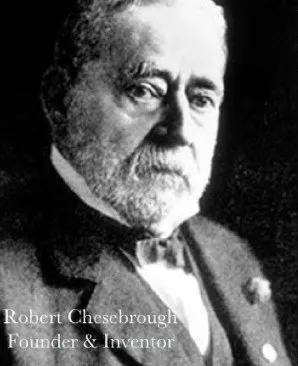Some discoveries are made through simple observation. People can use the blessings of nature for years without thinking about how to take advantage of it or benefit society. Until a person comes who has a sufficient level of education and enterprise.

In 1859 on the territory of the American state of Pennsylvania discovered oil deposits. Soon in his industrial heart, the city of Titusville, a 22-year-old British chemist, Robert Augustus Chesbrough, appeared. Observing the process of extracting oil from the bowels, the young scientist paid attention to the fact with which irritation and even hatred the workers constantly cleaned the pump filters of some jelly-like mass. Although willingly used it for application to cuts and burns.

Interested in this phenomenon, the chemist went to Brooklyn, where he began laboratory experiments. As a result, Chezbro managed to establish that the oil accompanying the oil is a compound of complex hydrocarbons and minerals. As a result of its distillation under vacuum and subsequent purification through coal from the bones of animals, a gel was obtained, which the scientist called an "oil jelly". True, as further medical research has shown, it not so much helped wound healing, how much it prevented infection and contributed to the regeneration of damaged skin. Somewhat later, corrections were made to the chemical process - the hydrocarbons melted in oil, and then the product was purified by sulfuric acid and bleaching clay.

Cesbrough was not only a talented chemist, but also a calculating businessman. Therefore, having patented his invention in 1872, he established a mass production of "oil jelly" based on the company Chesebrough Manufacturing Company he created. However, the samples for sale in the pharmacy were not in demand by visitors. Finally, the inventor realized that they are scared off by the word "oil" in the name of the means. Too strong it was associated with a flammable liquid. Then he decided to give the ointment the name "Vaseline", compiling it from two words: the German wasser ("water") and the Greek elaion ("olive oil").
To ensure the promotion of the new brand in the market, Chezbro, choosing the state of New York as a training ground, traveled around it and personally represented the product, even giving out free samples. Very soon Vaseline became popular not only in the US, but also in the Old World. And there he was appreciated by both ordinary citizens and members of the British royal family. In 1883, Queen Victoria, dedicating Chezbro to the knights, proudly admitted that she uses Vaseline every day. Robert Peary, an explorer of the Arctic, made no less advertisement of the drug, saying that when he conquered the North Pole to prevent cracks in the skin, which appeared from the effect of low temperature, he used this miracle ointment.
The company existed until 1987, and the next owner was Unilever, which made "Vaseline" a trademark for its not only pharmaceutical, but also cosmetic products. In fact, Vaseline has found application not only as an antiseptic. Housewives have adapted to wipe the surface of their wooden furniture. The fishermen greased the hooks as bait. Baseball players wiped gloves to soften their skin. Actresses before going on stage put on their cheeks "petroleum jelly" tears that looked from afar as real.
The product was used and the artists who covered vaseline floors in their workshops to protect themselves from drops of paint. And athletes, swimmers before the swim smeared their body to reduce resistance in the water. For a long time, petroleum jelly was also used in technical areas - as a lubricant for friction parts of mechanisms and slipways for a more smooth launching of vessels into the water.
Curiously, but the ointment was in demand and as a food product.
Her inventor, who died in 1933 at the age of 96, during his lifetime repeatedly stated that every day took a spoonful of petroleum jelly. Residents of remote areas of South America are still using colorless, having neither taste, nor smell, not prone to rancidity and the influence of moisture "oil jelly" instead of oil. And I must say, in the food industry, petroleum jelly also received official status in the form of biological additive E905b, which, for example, was used in the manufacture of chewing gum in the 1950s.